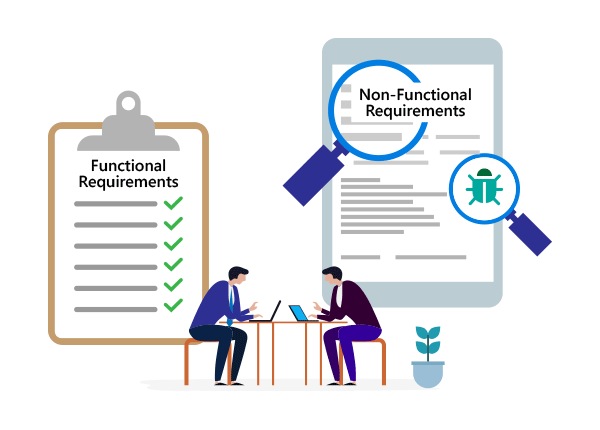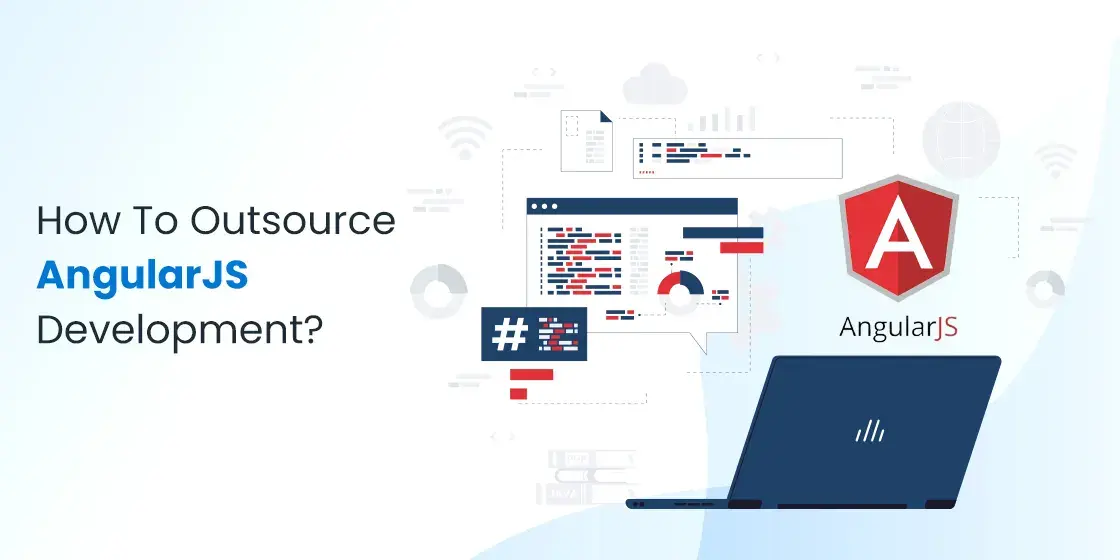Table Of Content
Understand the Difference between Functional and Non-functional Requirements
We all know that the end goal of any software project is to deliver the right product to the customers. This could be done by meeting their requirements which they have asked in a product software product. Functional requirements represent a term that helps developers to understand those requirements. It helps them to know what type of features or functions should be constructed in a software product to make it perfectly acceptable for the clients.
Nowadays, it has become quite important for the software engineers to understand functional requirements before starting any software project. Without having its clear understanding, they cannot plan the right steps needed in the project. This will eventually lead to wrong results which will waste all of the efforts and resources put into the project.
To avoid getting into this situation, it is best advised to calculate the functional requirements first. It will not only describe the important requirements, but will also let you know the end goals of the project. This way, you can offer better custom software development services knowing the exact requirements of the project.
In this article, we will study about the functional requirements in detail. It will help us to understand the basics, as what type of requirements should be focused and what should be not. Let’s first take a look at some general requirements that are often communicated in the proposal/quotation document.
Types of Requirements
To understand basics project goals, you need to follow the software development methodology to set some core objectives. These are different from the functional requirements, as it involves greater level of technicalities. However, having the knowledge of these requirements is still necessary, as it keeps your project understanding right on track.
Let’s take a quick look at them below.
Business Requirements
Business requirements are always discussed first between the client and developers at the start of the project. It highlights some basic high level statements related to the projects such goals, timeline, objectives and needs. It does not include any in-depth technical analysis, as that is done later by knowing all the details in the functional requirements phase.
User Requirements
User requirements are a set of points that defines the needs of the users. It lets the development team know what type of things a user should expect from the product solution. This analysis serves as a bridge between the business requirements and actual project solution. When the development team aligns all of these requirements perfectly, they come up to a clear solution understanding. It helps them to move forward positively in the project rightly as per the asked requirements.
Solution Requirements
Solution requirements describes those specifics that should be delivered in a project to make it acceptable for the clients or relevant stakeholders. It describes which type of .NET development tools should be used to achieve the required solution. This phase provides a thorough analysis about two important requirements i.e. functional requirements and non-functional requirements. Both of these things will be discussed in detail below to help you to understand better about their concept.
Understanding Functional vs. Non-functional Requirements

Being a developer, you must need to understand the differences between functional and non-functional requirements. It plays a big role in identifying problems and their solutions within the project. If you will remain unclear about these requirements, then your overall project analysis will certainly go wrong. This will ultimately bring effect on the final outcome, taking all your hard work and efforts into absolute vain.
So, to avoid any confusion or problems in the project, it is better to understand both of them in the first place. Let’s take a look at each of them separately, as it will help you to understand their core objectives in much detailed manner.
Functional Requirements
Functional requirements are those major objectives that should be achieved at the end of the overall development process. These are termed to be the basic requirements of a software that could not be neglected or ignored by any means. Their completion takes any project towards finalization or you could say that these requirements must be met before concluding any software project.
The functional requirements are always discussed before the start of the project. Both developers and clients offer their inputs about the requirements in their own way. The stakeholders are bit non-technical; hence they are often educated technically by the developers about the feasibility of the project. It includes nature of timelines, state of deliverables and more other factors that play an important role in finalizing the requirements.
Generally, functional requirements are described to the clients under specific technical conditions. It provides a better raw overview how the system would perform in the wake of any call or input by the users. This helps to specify the nature of the system and what type of solution or outcome should be expected from it.
Non-functional Requirements
Non-functional requirements precisely look at the bigger picture of a software rather than discussing its core functionalities in detail. It describes how a software application should perform to meet the requirements of the users. It can be understood as a definition of basic responsibilities of a software product. It gives a raw overview about the duties of a software, as how it should facilitate customers to resolve different types of problems.
Unlike functional requirements, these objectives are not related to the intricacies involved in a software application. They focus mainly on the outputs that are required by an application in the wake of anticipated user calls. These non-functional requirements do not discuss the strategies that should be involved to deliver that output. They rather pay attention to the final outcome or results that should be achieved at the end of a particular process.
Normally, non-functional requirements are communicated to the developers by actual software stakeholders. They describe their basic requirements from a software, as what type of operations it should do and how it should facilitate their customers. The developers are then given the task to further breakdown these points into functional requirements, so that the exact feasibility of the project can be decided mutually.
What Does Functional Requirements Include?

The classification of functional requirements should be done smartly so that nothing could be left behind at the end of the analysis. Generally, it should be done by an experienced software professional who is known to have good knowledge about requirements gathering. He/she should be given the task to consult with the clients about application requirements.
From administrative functions to regulatory requirements, everything should be noted to keep the whole process effective. A lot of times, people forget about important things that should be included during information gathering. Here are some of them that must be written while collecting information about functional requirements.
- Business rules
- Transaction corrections
- Adjustment functions
- Administrative functions
- System authorization levels
- Certification requirements
- Authentication requirements
- Application auditing
- UI/UX requirements
- Reporting and analysis
- Legal requirements
- Historical data
What Does Non-functional Requirements Include?

Some people think that non-functional requirements are not important as long as they have gathered the functional requirements. This is certainly not true, because non-functional requirements are also very important to understand some of the main objectives of an application. It provides a high level view of what the application does or how it resolves users’ problems at the first glance.
Unlike the other, non-functional requirements help both developers and stakeholders to understand the key objectives of the application. Its analysis allows both parties to come on the same page, provided the resources and budget are also available. If you do not have much knowledge what type of things are included in the non-functional requirements, take a look at the list of points given below.
- Performance analysis
- Application response time
- Resource utilization
- Throughput
- Capacity of the system
- Scalability depth
- Reliability of the application
- Maintenance procedures
- Service requirements
- Security analysis
- Regulatory standards
- Interoperability
- Data integrity
- Usability
Benefits of Functional Requirements
The collection of functional requirements at an early stage provides tons of benefits to the developers. It helps them to plan the entire development process easily. The chances of missing anything or doing a mistake becomes lesser with the earlier analysis of functional requirements. It ensures to produce error free results and offer clients the exact product as per their given demands.
Here are some core advantages you will get by wisely understanding functional requirements of any project.
- Helps you to evaluate whether the application is functioning according to the given requirements. If not, the components are rechecked using software testing tools to ensure efficiency as advised.
- Preparing a functional document allows you to describe the entire functionality of the system and its core components to the clients.
- The combination of functional requirements and analysis report helps you to identify the missing requirements in the document. It makes you aware whether any important point is missed or not.
- Errors identified during the functional requirements gathering could be easily fixed. It makes sure that those errors are not forwarded to the actual development phase, as they are earlier caught during information collection.
- Functional requirements help developers to know how to complete the users’ tasks, activities and process outcomes.
Functional Requirements Examples
To fully understand what functional requirements are, you need to look at some examples describing the exact system process calls. Here are some of them defined below.
- The software should automatically authenticate and verify data when a user tries to log into a system.
- The system should generate error calls whenever a person tries to enter wrong data into the login form.
- The system should automatically show a welcome message through API calls to the person with his/her exact name stored in the database.
- The software application should evaluate what type of roles and access should be given to the users depending on their designation.
Non-functional Requirements Examples
The understanding of non-functional requirements should also be made correctly to keep everything aligned in the development process. Here are some examples that will help you to understand the nature of non-functional requirements.
- The system should send emails to the customers every once in a week. It should also send specific emails on any special event.
- The application should take no longer than 10 seconds to process any request. In case of delays, it should automatically send a waiting message to the customers.
- The system should be regulated according to the local laws wherever it is operating in the world.
- The website should not enroll candidates lesser than 18 years old. It should redirect them to the eligibility page to check all the age requirements.
Final Words
That conclude our entire article in which we have discussed some basics about functional requirements in software development. These requirements help developers to analyze various important points before the start of the development process. It provides assistance in gathering technical information about various tasks, such as login process, authentication tests, debugging tasks and more others. This information allows developers to plan different tasks efficiently, so that the outcome can be achieved as per the required expectations.
If you are looking for a software outsourcing company that is well versed in producing software products as per the given functional requirements, get in touch with us today. Our software engineers are quite experienced in working with latest technologies to develop advanced software applications, perfectly according to the custom demands.
Frequently Asked Questions (FAQs)
| What are functional requirements? Functional requirements refer to that analysis that lets you know about the technical details of any application or process. It helps to plan the development process better, allowing developers to achieve potential expected results. |
| Why collecting functional requirements is important for the developers? Functional requirements help developers to plan the entire software development process better. It describes every little detail about the processes, so that developers can take all the necessary measures to complete them with positive results. |
| What are the benefits of functional requirements? Functional requirements offer various types of benefits to the developers. It gives them a good overview about what is required and how it could be achieved by carrying out specific technical operations. |
| Define some examples of functional requirements? Functional requirements can be understood by looking into some practical examples such as the technical requirements for user login process, input authentications, validating database fields and more others. |
Empower your digital initiatives with BariTechSol, a premier custom software development company. Our skilled team tailors cutting-edge solutions to your unique needs. Elevate your tech experience and stay ahead in the digital realm. Partner with BaritechSol and code the success of your next big idea.


